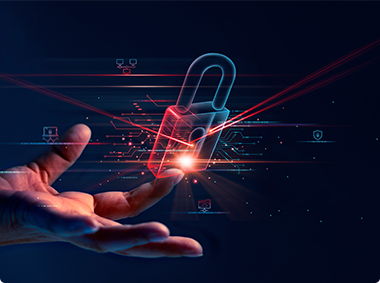The Backbone of Modern Transportation
Railways have been a vital part of economic and social growth for centuries, connecting people and businesses worldwide. However, as technology has advanced, the railway industry has faced a new and growing threat—cyberattacks. From ransomware that halts operations to breaches that compromise passenger data, these attacks are becoming more frequent and sophisticated.
The history of cyberattacks on railways is a wake-up call. It’s no longer a question of if an attack will happen but when. To protect passengers, operations, and critical infrastructure, the rail industry must prioritise cybersecurity like never before.
The Evolution of Cyber Threats in Railways
In the past, railways relied on mechanical systems that were isolated from external interference. But the advent of digitalisation has transformed the industry. Automated ticketing, signalling systems, smart IoT devices, and real-time tracking have significantly improved efficiency and customer experience. Unfortunately, these advancements have also created new vulnerabilities.
Consider these real-world incidents:
- 2008: A malware attack disrupted the ticketing system of a major European railway, leading to delays and financial losses.
- 2020: A ransomware attack on a North American rail operator delayed critical freight deliveries and caused operational chaos.
These cases show how the rail industry’s increasing reliance on interconnected systems has made it a prime target for cybercriminals.
Why Railways Are a Prime Target for Cybercriminals
Railways are particularly appealing to cybercriminals for several reasons:
- Critical Infrastructure: Railways are essential to national economies and public transport systems. Disrupting them can cause widespread chaos and draw attention to the attackers.
- Interconnected Systems: The integration of IT (information technology) and OT (operational technology) creates multiple entry points for cyberattacks, from ticketing kiosks to control rooms.
- Public Safety Risks: Attacks targeting signalling systems or automated controls could lead to accidents, endangering lives and undermining trust in rail services.
- Data Richness: Rail operators manage vast amounts of data, including passenger information and freight logistics, making them attractive targets for ransomware and data theft.
The consequences of a successful cyberattack are far-reaching, affecting not only operational efficiency but also public trust and financial stability.
Major Cyber Attacks on Railways: Lessons Learned
Each cyberattack on railways tells a cautionary tale:
- Incident 1: Ticketing System Outage
A major European rail operator suffered a malware attack that crippled its ticketing systems for several days. The financial losses were substantial, and passenger dissatisfaction grew as services were disrupted.- The lesson? Protecting customer-facing systems is as crucial as safeguarding backend infrastructure.
- Incident 2: Ransomware in Freight Operations
A North American freight operator experienced a ransomware attack that delayed shipments and cost millions in ransom and recovery.- The takeaway here is clear: continuous monitoring and swift incident response are non-negotiable in modern rail operations.
From these examples, one thing is certain: cybersecurity is no longer a secondary concern—it’s a business-critical priority.

How to Secure the Future of Railways
To mitigate the risks of cyberattacks, the rail industry must adopt a proactive approach to cybersecurity. Here are some key steps to ensure safety and resilience:
- Invest in Continuous Monitoring
A Managed Security Operations Centre (SOC) provides 24/7 monitoring, ensuring that any suspicious activity is detected and addressed before it escalates. This proactive approach is essential for rail systems, which operate around the clock. - Segment Networks
Separating critical systems, such as signalling and operational controls, from less secure networks reduces the risk of a widespread breach. - Train Employees
Human error remains one of the most common causes of cyber incidents. Regular training ensures that staff can identify phishing attempts, avoid risky behaviour, and respond appropriately to potential threats. - Adopt Industry Standards
Compliance with cybersecurity standards like ISO/IEC 27001 ensures that rail operators follow best practices for information security management. - Collaborate Across the Industry
Sharing threat intelligence and best practices with other operators and regulatory bodies helps the entire rail ecosystem stay ahead of evolving cyber threats.
Why a Managed SOC is Essential
Rail operators often lack the internal resources to handle cybersecurity effectively. Building an in-house SOC requires significant investments in personnel, technology, and ongoing training. A Managed SOC offers a cost-effective alternative, providing:
- 24/7 Protection: Round-the-clock monitoring ensures that threats are identified and neutralised in real time.
- Advanced Threat Detection: Tools like SIEM (Security Information and Event Management) analyse patterns and anomalies to uncover hidden threats.
- Incident Response Expertise: Managed SOC teams act swiftly to contain and resolve incidents, minimising downtime and impact.
By using Threatproof’s Managed Soc service, you can focus on providing safe, efficient and reliable services.
Act Now to Protect the Future
The history of cyberattacks on railways is more than a collection of incidents it’s a warning of what’s to come. As the industry continues to embrace digital transformation, the stakes are higher than ever.
Investing in robust cybersecurity measures, like a Managed SOC, is not just about protecting systems it’s about safeguarding passengers, operations, and reputations.
Don’t wait for the next attack to disrupt your operations. Contact us today to learn how Threatproof Managed SOC solutions can help secure your railway systems and ensure a resilient future.
© Copyright 2025. Threatproof. All rights reserved. Registered in England and Wales No. 15090203, 128 City Road, EC1V 2NX, UK. Threatproof is a registered trademark. All other product and company names mentioned are trademarks or registered trademarks of their respective owners


